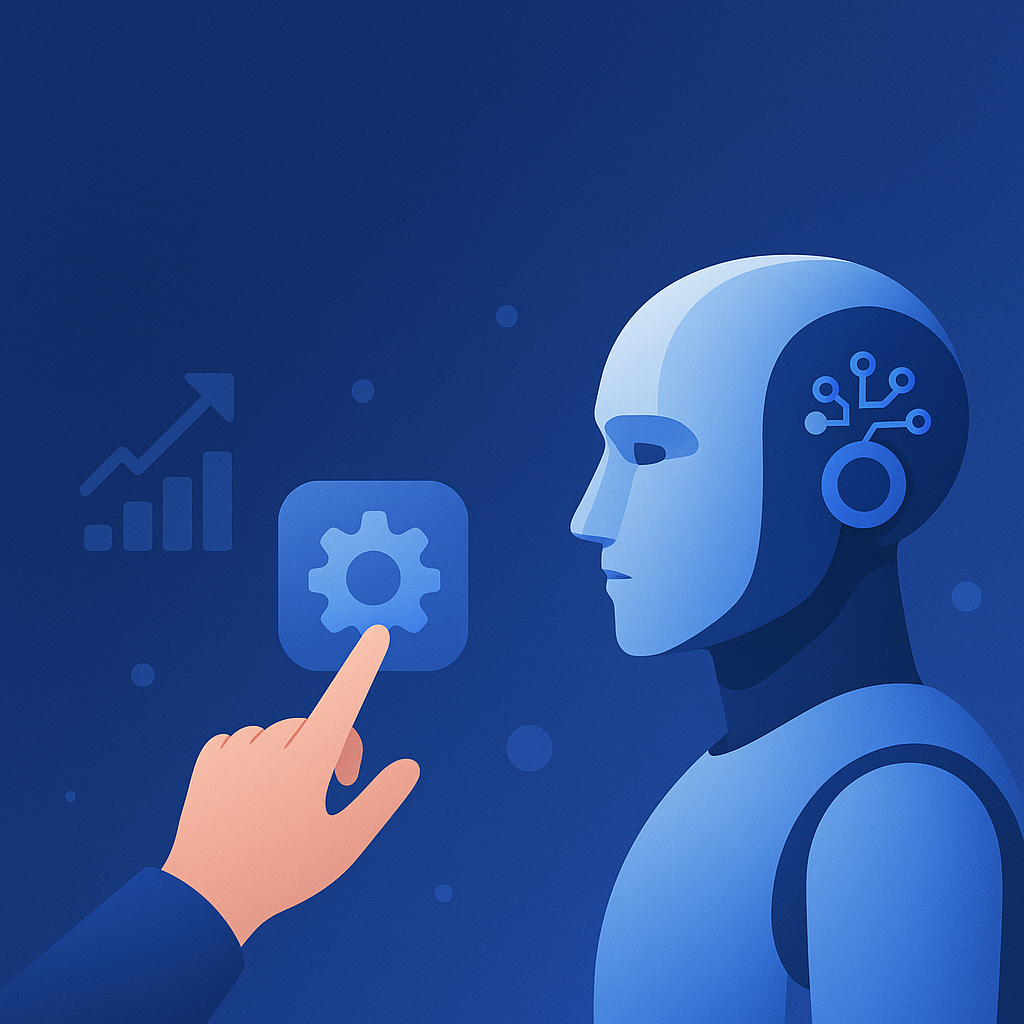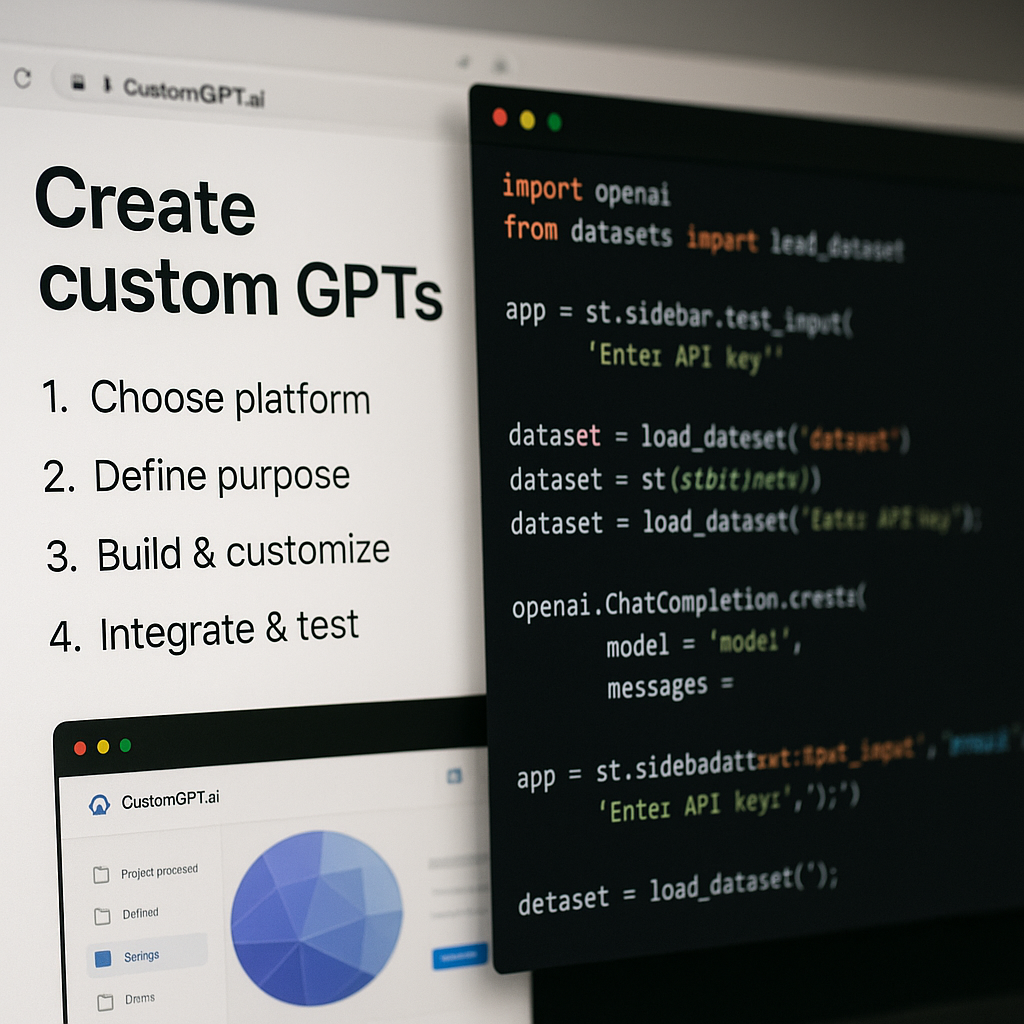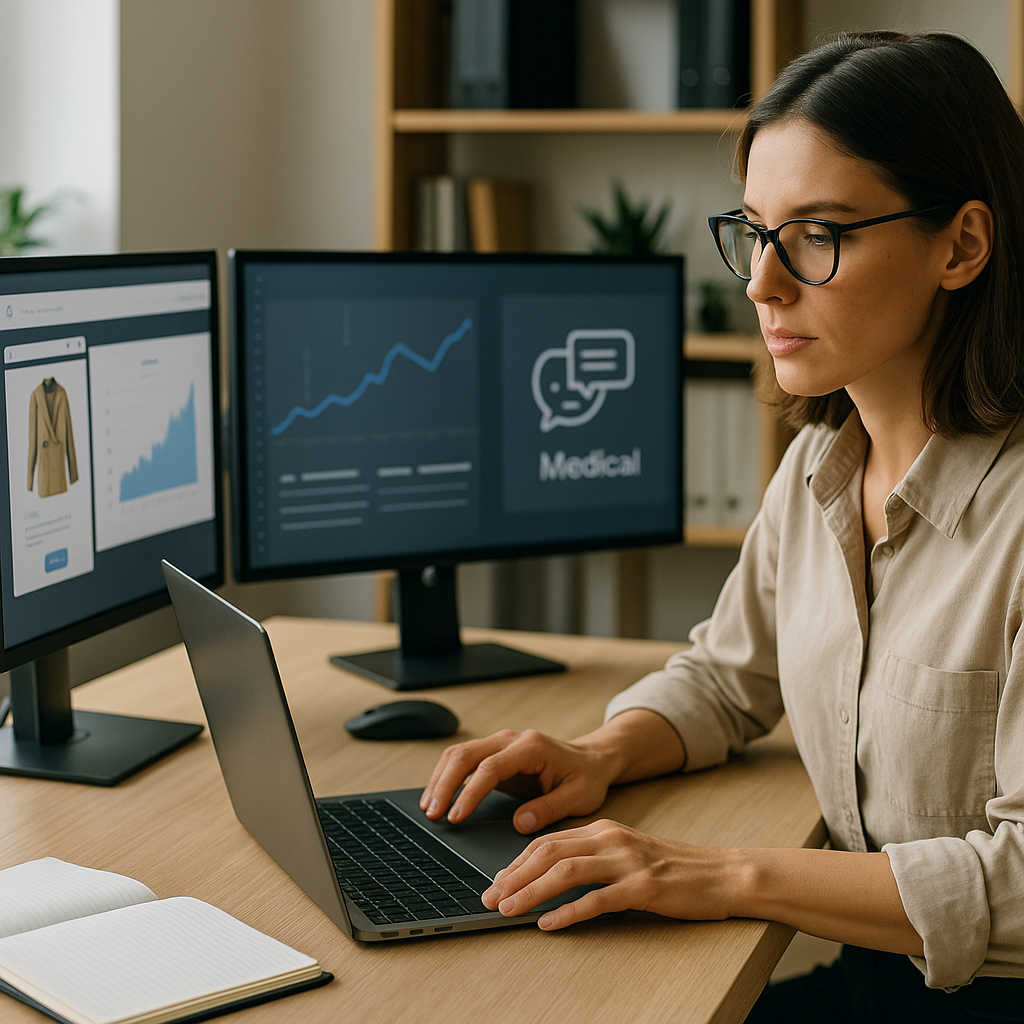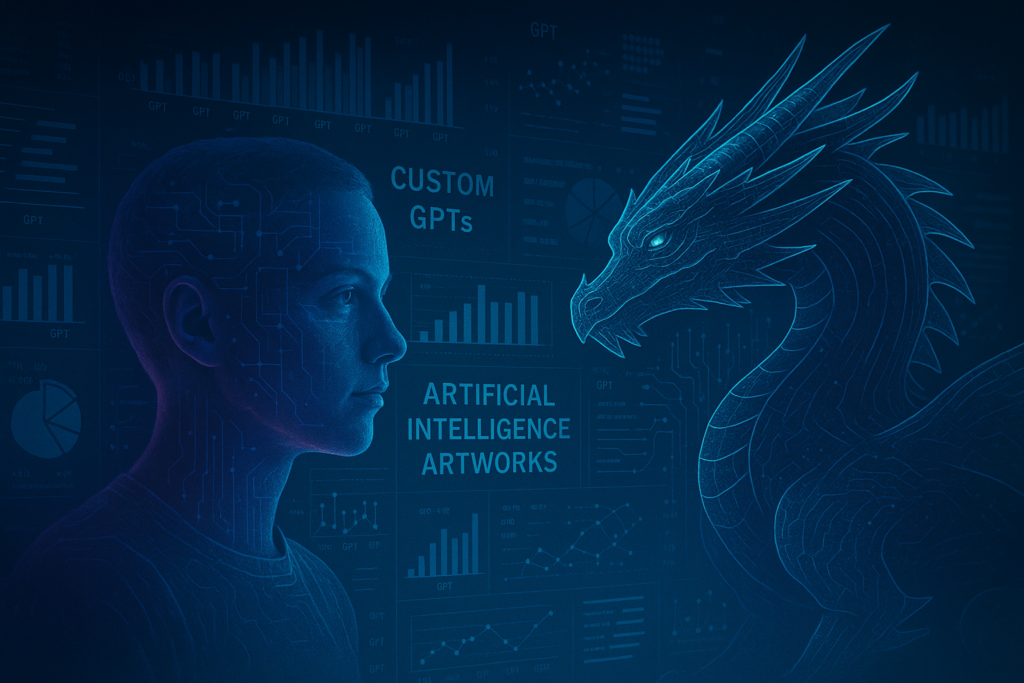Physical Address
304 North Cardinal St.
Dorchester Center, MA 02124
Physical Address
304 North Cardinal St.
Dorchester Center, MA 02124

Have you ever wondered how custom GPTs are changing the way we work, create, and communicate in today’s fast-moving world of industry AI? In recent years, these tailored AI models have gone from being experimental tools to becoming essential engines of innovation—especially in the world of artificial intelligence artworks. By designing a GPT that understands the unique needs of your industry, you can unlock new levels of efficiency, creativity, and personalization.
The year 2025 marks a turning point. With rapid advancements in openai custom GPTs, chatgpt custom GPTs, and other AI platforms, we’re seeing smarter, faster, and more adaptable models than ever before. Whether it’s generating lifelike digital paintings, crafting immersive storylines, or streamlining customer support through custom GPT AI chatbot solutions, the possibilities are expanding daily.
In this guide, we’ll explore not just what makes custom GPTs so powerful, but how you can leverage them to transform your work—especially if you’re in the creative, tech, or service sectors. Get ready to discover how AI’s creative spark can blend with industry-specific intelligence to produce results that feel less like machine output and more like inspired human artistry.
If you’ve ever tried using a generic AI model and felt it was “good, but not quite right” for your needs, that’s where custom GPTs come in. A custom GPT is essentially a version of the GPT (Generative Pre-trained Transformer) architecture that’s fine-tuned or configured for a specific purpose—whether that’s creating artificial intelligence artworks, powering a customer service chatbot, or analyzing niche industry AI data. Unlike off-the-shelf models, custom GPTs are built to understand your audience, your tone, and your unique requirements, which makes them far more effective in delivering accurate and relevant results.
GPT stands for “Generative Pre-trained Transformer,” and it’s a technology that has evolved rapidly in the last few years. In the early days of the GPT industry, models were impressive at generating text but lacked the depth needed for specialized work. Today, with tools like OpenAI custom GPTs and ChatGPT custom GPTs, creators can design AI that feels less like a generic assistant and more like a knowledgeable team member who “gets” your goals.
One of the big differences between OpenAI custom GPTs and ChatGPT custom GPTs lies in flexibility and accessibility. OpenAI custom GPTs often give developers deeper integration options and API access, while ChatGPT custom GPTs are more user-friendly, making them great for quick deployment—especially if you’re not a coder. Think of it like fitness: asking “will building muscle burn fat” oversimplifies the process, just like thinking one generic AI can handle every specialized task oversimplifies AI capabilities. Both require targeted approaches for the best results.
In short, custom GPTs aren’t just upgraded versions of existing AI—they’re purpose-built solutions that combine creativity, precision, and adaptability. Whether you want an AI to calculate engineering values, compose poetry, or answer industry-specific queries, the right customization can make all the difference. And as the GPT industry grows, the line between human expertise and AI-generated brilliance continues to blur.

If you think AI has already peaked, 2025 is here to prove you wrong. The latest AI industry trends show that GPT applications are moving beyond simple text generation and into highly specialized roles—ones that can adapt to different sectors with ease. From healthcare to education, and from finance to entertainment, businesses are building custom GPTs that understand their industry language and deliver smarter, faster results.
One area seeing explosive growth is artificial intelligence artworks. With the power of top AI models, creators can now produce art that blends technical precision with emotional depth—something that was nearly impossible just a few years ago. These AI-generated masterpieces are showing up in galleries, films, and even immersive gaming environments, proving that machines can be as much a part of the creative process as human artists.
AI tools like ChatGPT are also evolving. Once known mainly for answering questions or generating content, they’re now maturing into full-fledged AI conversational bots capable of understanding context, remembering details, and providing solutions in a more human-like manner. This shift is making AI a valuable team member rather than just a tool.
Then there’s the rise of AI dragons—cutting-edge AI breakthroughs that are setting new performance records. These innovations are pushing boundaries in reasoning, creativity, and multimodal capabilities, making them especially impactful for industries that thrive on originality and problem-solving.
In short, 2025 isn’t just another year for AI—it’s the year when custom GPTs, advanced models, and bold breakthroughs combine to change how we work, create, and imagine the future.
Creating custom GPTs might sound like something only expert developers can do, but the truth is, with the right tools and a bit of guidance, it’s surprisingly approachable. Whether you want your GPT to calculate the volume of a cuboid for a construction project or generate detailed artificial intelligence artworks for a gallery, you can build one that fits your exact needs.

If you’re just starting, platforms like CustomGPT.ai make the process simple with user-friendly interfaces. You can also try ChatGPT free online to experiment before committing to advanced features. For those on the go, the chatgpt mac app offers flexibility to build, test, and tweak GPTs from anywhere.
Ask yourself—what do you want your GPT to do? Is it answering customer queries, creating AI-generated videos, or running niche industry calculations? The clearer your goal, the better your results.
Using the custom GPTs API, you can fine-tune your model with industry-specific data, style preferences, and example prompts. This is where you turn a generic AI into a specialized assistant.
Connect your GPT to your website, app, or workflow. Always test its output—not just for accuracy but also for originality. Tools like ChatGPT detectors can help ensure your AI-generated content remains authentic and free from plagiarism concerns.
Use secure cloud data storage or cloud storage solutions to keep your GPT’s training data and configurations safe. Regular backups will protect you from accidental loss.
One of the biggest mistakes when learning how to make custom GPTs is overloading them with too much irrelevant data. This can confuse the model, leading to inconsistent responses. Another common issue is neglecting to test in real-world conditions—what works in a controlled setup might not perform well in the wild.
By starting small, testing often, and refining as you go, you’ll create a GPT that doesn’t just work—it works brilliantly for your unique needs. In the end, a well-built custom GPT can feel less like a tool and more like a partner in your projects.
When you merge advanced AI models with the world of artificial intelligence artworks, the results can be nothing short of magical. A custom GPT trained on a specific artistic style or creative niche can generate pieces that not only look beautiful but also carry emotional depth. This blend of machine intelligence and artistic vision is opening doors for artists, filmmakers, and designers to explore entirely new creative frontiers within the GPT industry.
In the film industry, we’re seeing the rise of artificial intelligence AI film production. Imagine creating realistic scenes, characters, and even dialogue with minimal manual effort—yet still maintaining your unique artistic touch. With a well-trained custom GPT or even openai custom GPTs, filmmakers can quickly generate storyboards, visual effects, and scripts that feel authentic and cohesive. Similarly, artificial intelligence picture creation is enabling photographers and digital artists to expand their portfolios with images that push beyond the limits of traditional design tools.
The possibilities grow even further with multimedia tools like text to video AI free platforms, which transform written prompts into engaging videos in minutes. For those working on larger projects, AI video pricing can vary depending on complexity and resolution, but a carefully built custom GPTs API integration can optimize scripts, scenes, and assets before production to save both time and money.
Of course, with the rapid rise of AI-generated content, originality is a major concern. This is where chat gpt detectors become essential. They help ensure that the content you create with your AI conversational bot is truly unique and not a copy of existing works. For artists and brands, this not only protects intellectual property but also maintains credibility in a competitive market.
Ultimately, custom GPTs—whether you use ChatGPT custom GPTs or a platform like CustomGPT.ai—are becoming the creative partner every modern artist dreams of: one that never tires, adapts to your style, and helps bring even the boldest artistic visions to life.
Have you ever wondered how a custom GPT could completely change the way your industry works? These AI-powered assistants are no longer just about answering questions—they’re becoming specialized problem-solvers that can be tailored for almost any professional field.
In e-commerce, custom GPT AI chatbot solutions are helping businesses handle customer inquiries instantly, recommend products, and even generate personalized marketing campaigns. In education, teachers are using chatgpt custom GPTs to create interactive lesson plans, provide instant feedback, and adapt materials for different learning styles. Healthcare professionals, on the other hand, benefit from openai custom GPTs that can assist in preliminary diagnostics, patient communication, and medical record summarization—all while staying compliant with industry regulations.
Custom GPTs are also valuable for researching AI industry trends. A specialized GPT can scan through the latest studies, news, and reports to deliver concise, relevant insights that keep professionals ahead of the curve. For niche sectors like gaming, design, or marketing, a custom GPTs store offers ready-made models fine-tuned for those markets—saving time and boosting productivity.
Even in project planning, custom GPTs have practical uses. Need to know what building took the longest to build for a research project? Your GPT can find the answer instantly. Working on architectural or engineering designs? It can help calculate the volume of a cuboid or volume cuboid with precision, integrating the results directly into your workflow.
The beauty of these industry applications is that they combine the creativity of artificial intelligence artworks with the functionality of AI conversational bots. This makes custom GPTs not just a tool, but a versatile partner capable of adapting to diverse sectors. Whether you’re running an online store, a classroom, or a global healthcare network, the right GPT can make your work faster, smarter, and more impactful.

When it comes to creating and using GPTs, you have more options than ever in 2025. For many beginners, chatgpt free online is the perfect starting point—it’s cost-free, easy to access, and great for testing ideas before you invest in advanced features. However, if you want faster responses, priority access during peak times, and early access to new tools, upgrading to ChatGPT Plus or a ChatGPT Plus subscription can be worth it. The extra speed and reliability often make a big difference for professionals who rely on GPTs daily.
Of course, ChatGPT isn’t the only player in town. Some of the best ChatGPT alternatives in 2025 include platforms like Claude, Google Gemini, DeepSeek, and Microsoft Copilot—each offering unique strengths such as advanced reasoning, multimodal abilities, or deep ecosystem integrations (tomsguide.com).
For those who work on the move, the chatgpt mac app is a game-changer. It allows you to create, test, and refine your GPTs without being tied to a desk—perfect for freelancers, remote workers, and digital nomads.
Communication tools are also evolving alongside GPTs. Google Google Hangouts, for example, can be integrated with your AI conversational bot, allowing seamless customer interactions, automated meeting notes, or quick project updates. By connecting your GPT to these platforms, you can keep conversations flowing smoothly across your team or with clients.
If you’d like a deeper dive into how these tools stack up and when to use which, this guide from Tom’s Guide — I test AI chatbots for a living and these are the best ChatGPT alternatives — breaks down each alternative’s strengths and weaknesses.
Whether you’re using chatgpt free online for casual experimentation or investing in advanced AI conversational bot frameworks for complex tasks, the key is finding the right combination of tools that fits your goals. With so many options available, 2025 is the year to explore, mix, and match until you find the perfect AI toolkit.
As custom GPTs become more advanced, security and ethical considerations are just as important as their capabilities. Safe storage is essential—cloud data storage and reliable hosting (often mistakenly called hoisting) ensure that your models, training data, and configurations are protected from loss or unauthorized access. Just like you wouldn’t keep sensitive files on an unsecured device, your AI deserves the same level of care.
Protecting AI-generated intellectual property is another critical step. Artists and businesses using custom GPTs for artificial intelligence artworks or industry AI projects must ensure their creations remain unique. This is where chat gpt detectors can help by checking originality and preventing accidental duplication of existing content.
When it’s time to retire a model, think of it like how to delete a Gmail email account—clear, deliberate steps to remove all associated data, ensuring no traces remain in your systems. Similarly, managing data in AI development can benefit from a method like how to lock row in Excel; by freezing critical dataset versions, you prevent unwanted changes during testing or deployment.
Even small utility features can add unexpected value. For example, a GPT trained to calculate the volume of a cuboid can be just as useful in an engineering project as one generating a marketing script. And with tools like ChatGPT, free online or the ChatGPT Mac app, securely managing and accessing your AI resources from anywhere has never been easier. In 2025, good security and storage habits are the foundation for ethical and reliable AI innovation.
The next decade promises remarkable growth for artificial intelligence artworks, with custom GPTs leading the way in merging human creativity and machine intelligence. These models will make it easier for artists, designers, and filmmakers to create everything from intricate paintings to fully immersive experiences. With platforms like chatgpt free online lowering the entry barrier and the chatgpt mac app offering portable, professional-grade tools, more creators will be able to experiment with AI at scale.
One of the most exciting developments is the rise of AI dragons—superintelligent models capable of generating groundbreaking concepts in seconds. Built on the pioneering vision of John McCarthy, the father of artificial intelligence, these innovations are transforming the GPT industry into a hub of limitless creativity and problem-solving potential.
Beyond the arts, custom GPTs will find roles in everyday problem-solving, whether that’s calculating the volume of a cuboid for engineering work or streamlining customer interactions through ai chatgpt platforms. As adoption grows, chat gpt detectors will play a crucial role in protecting originality and ensuring ethical standards.
In the coming years, advancements in artificial intelligence artworks and ai chatgpt technology will blur the lines between human and machine creativity, reshaping industries and redefining what’s possible.

As we’ve explored, the best custom GPTs are transforming both creativity and industry applications—whether you’re designing breathtaking artificial intelligence artworks or streamlining workflows in healthcare, education, and e-commerce. From openai custom GPTs that power enterprise-grade tools to flexible platforms like chatgpt free online for quick experimentation, there’s a solution for every creator and business.
The beauty of these tools is their versatility. A single model could calculate the volume of a cuboid for an engineering project in the morning and generate a marketing campaign by the afternoon. With the chatgpt mac app, you can build and refine your GPTs anywhere, while chat gpt detectors help you maintain originality and integrity in your AI-generated work.
Now, it’s your turn. Experiment with create custom GPTs, fine-tune them to your needs, and explore how your own custom GPT AI chatbot solutions can make a difference in your field. The GPT industry is evolving quickly, and your ideas could help shape its future.
We’d love to hear from you—share your success stories, challenges, and creative breakthroughs. Who knows? Your journey might inspire the next big leap in AI innovation.
1. What are custom GPTs?
Custom GPTs are AI models designed for specific needs, offering more accurate results than generic AI models. They’re widely used in industry AI, from e-commerce to artificial intelligence artworks.
2. How can I create custom GPTs?
You can create custom GPTs using platforms like openai custom GPTs, chatgpt free online, or the chatgpt mac app, then train them with data from your field.
3. Are custom GPTs useful for creative work?
Yes! They’re perfect for artificial intelligence artworks, AI film, and even calculating the volume of a cuboid in design or engineering projects.
4. How do I ensure originality in AI content?
Tools like chat gpt detectors help keep your work unique and protect intellectual property.
5. Where can I learn more?
Visit icebergaicontent.com for expert tips, guides, and the latest GPT industry trends.